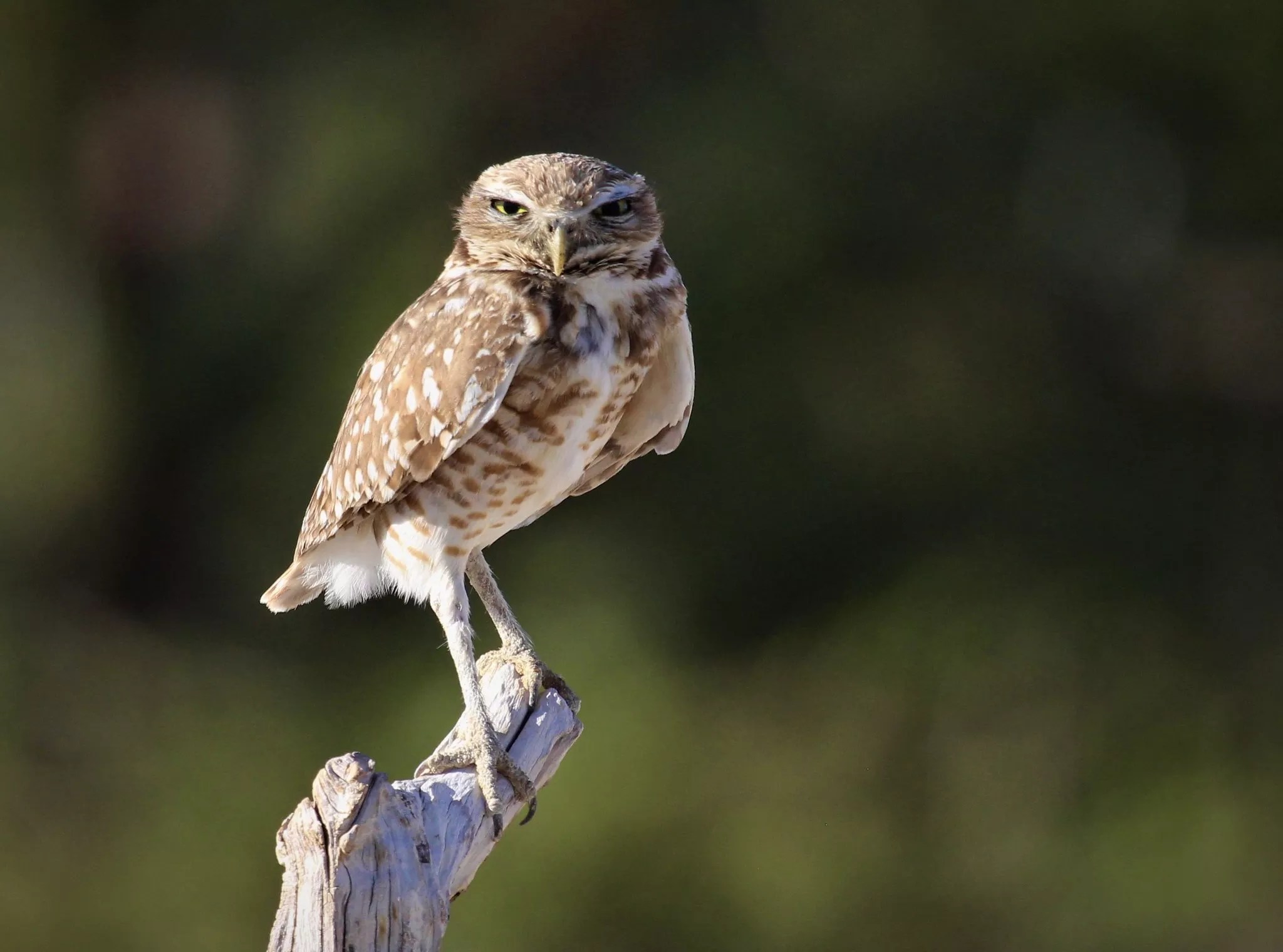

Audio By Carbonatix
Florida Atlantic University (FAU) is displacing its native neighbor and mascot, the burrowing owl, as the school expands its Boca Raton campus. Once the owls flee, FAU staff fill the empty burrows with sand ahead of construction for a new housing unit.
A five-year plan involves two more fields containing owl habitat, while student activists demand that further development be rerouted and supplemented with conservation efforts. In 2024, the university secured an Incidental Take permit from the Florida Fish and Wildlife Conservation Commission (FWC), allowing management to “non-lethally harass” burrowing owls to force relocation.
The National Audubon Society designated FAU’s Boca Raton campus as an official burrowing owl sanctuary in 1971.
“To check the burrows, a FWC-trained biologist performed video scoping to confirm that no eggs or flightless young were present prior to any activity,” Joshua Glanzer, an FAU spokesperson, says. “Once a burrow was confirmed to be empty, it was collapsed to prevent re-burrowing.”
Miami, make your New Year’s Resolution Count!
We’re $14,500 away from reaching our $30,000 year-end fundraising goal. Your support could be what pushes us over the top. If our work has kept you informed, helped you understand a complex issue, or better connected you to your community, please consider making a contribution today.
When students discovered the development plans earlier this year, they began to mobilize: contacting administration and local news stations, and sitting in at development meetings. A Change.org petition to save the owls, started by South Florida wildlife videographer and environmentalist Theo Quenee, has garnered over 12,000 signatures.
“I called them up as soon as it happened,” Liam Baysura, the former vice president of FAU’s Sustainability Club, says. “We were adamant about getting the university admin to respond to us. We didn’t want to halt development; we just wanted a conversation, but we never heard back, and they are still proceeding with the development.”
Seventy percent of FAU’s 29,000 students take classes at the university’s largest campus in Boca Raton. This fall, the university welcomed the largest freshman class in its 61-year history.
“It’s kind of a slap to the face when they’re going to kick off our own mascot instead of becoming a more prestigious university, because we have room for renovation in the existing buildings,” Baysura says. “This isn’t just a university issue; this is a statewide issue. We’re seeing development everywhere. It’s going to happen, but it needs to happen in a manner of respect.”
The petition calls on FAU to conserve two fields on the southeast side of the Boca Raton campus as protected viewing areas. The university, meanwhile, plans to build new housing next to the fields. Construction on an accompanying parking lot is already underway and expected to be completed in time for students to move in by fall 2026.
“That’s the land that we’re fighting now; there are owls on that piece of land,” Juliana Soto, an FAU student and animal activist, says. “Many years before this, there were tons of owls, and now they’re being sanded. The burrows are being sanded, the burrows are being invaded by Iguanas, and FAU doesn’t want to do anything about it.”
Early last year, Soto discovered plans for an FAU parking garage on an acre of land near the entrance to Tortuga Trail, a preserve flanking the northwest side of campus. In addition to burrowing owls, the pristine park is home to gopher tortoises, birds, snakes, and even coyotes. Soto contacted news stations to call attention to the proposed parking lot.
FWC designated the burrowing owl a state-threatened species in 2017, prohibiting people from taking, possessing, or selling the owls, their nests, or eggs without a permit. Earlier this month, FWC approved new guidelines to aid in burrowing owl conservation, including clear standards for how developers must compensate for damage when a project disrupts natural habitats. But the stricter policies do not apply to the development at FAU.
“FAU’s current permit falls under Category 2, which covers projects like campus development that impact burrows and surrounding habitat but do not result in loss of more than 50 percent of suitable foraging habitat,” FWC spokesperson Lisa Thompson shared in an email to New Times. “Once a permit is issued, its conditions remain in effect for the full term of the permit. New requirements only apply to applications submitted after the revised Guidelines take effect.”
For now, FAU’s Boca Raton campus still has land set aside for burrowing owl habitat.
“I hope that FAU does their part as an owl sanctuary to preserve and conserve that area,” Soto says, “like removing the iguanas and putting up a sign that there are owls here.”